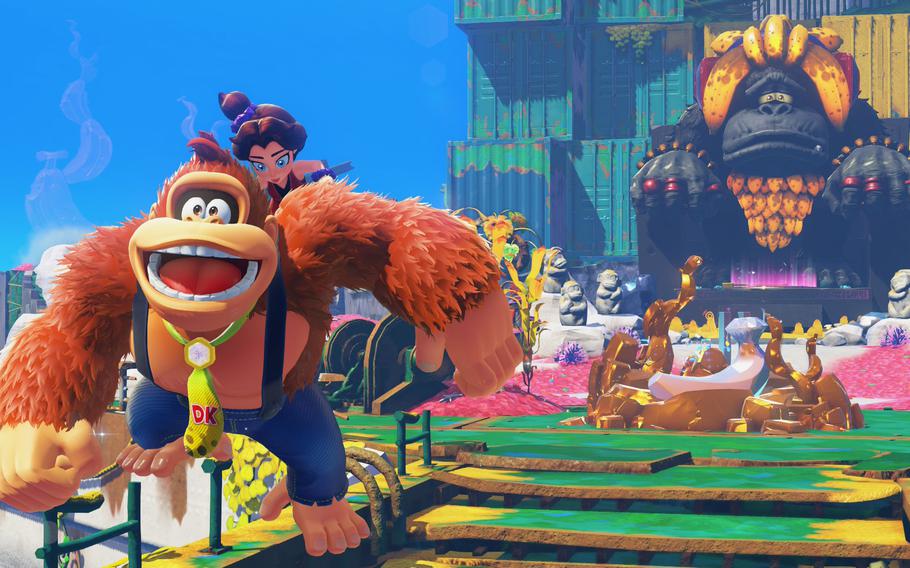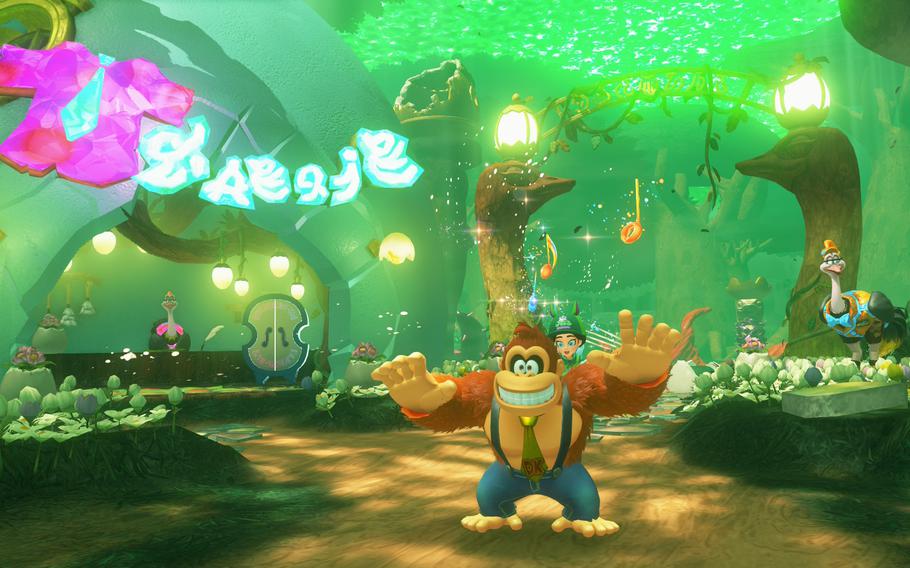
Donkey Kong Bananza fuses ideas from Nintendo’s top series to elevate the company’s first franchise character. (Nintendo)
Donkey Kong Bananza, the first big adventure for the new Nintendo Switch 2 console, is also one of the best Nintendo games in recent years, evolving ideas from Mario and Zelda games in service of the company’s first big star.
The most memorable Nintendo titles introduce a clever twist on gameplay. The big new idea for Donkey Kong Bananza is the best kind: a technical, visual marvel that offers new ways to interact with the game. The terrain is destructible at the player’s whim, as punching the ground, walls and cliffsides produces a fireworks display of debris. Mr. Kong is now a mythical hero from a Jimi Hendrix verse, able to chop down mountains with his hands.
Bananza is the first Donkey Kong game developed internally by Nintendo in more than two decades, now staffed by the team that created the award-winning 2017 Switch title Super Mario Odyssey. This game adopts Mario’s trademark powers of transformation. Instead of wearing different superpowered hats, Kong can transform into different animal “bananza” forms that allow him to fly (ostrich), punch through steel (ape) and sprint across thin ice weightlessly (zebra). While these powers run on a limited meter, a few sections allow extended use of them. The game soars when it demands usage of every single form, becoming a symphony of mechanics and player response.
The story is simple, as all Nintendo stories are: While working in the mines for gold bananas, Donkey Kong stumbles upon a little girl named Pauline trapped beneath the surface. She wishes to return to the surface to explore her dream of being a singer and enlists Mr. Kong to help navigate various layers of the underworld. We’re told we must journey to the planet’s core for answers. Each layer presents a different video game world: The first layer is a breezy tropical lagoon area, complete with a subterranean sun, while deeper layers include typical video game ecosystems like ice worlds and volcanoes. Each “layer” has set boundaries, so players can’t punch across the planet indefinitely.
Kong may not wear many hats, but he can wear a variety of pants and ties that enhance his robust tree of abilities, all of which can be obtained through various collectibles in the game. Shopping for Pauline’s clothes also yields special powers, creating unique “builds” of the duo to navigate the game’s various environmental puzzles. The sartorial focus alongside Pauline’s bouncing tunes can remind you of Nintendo’s Splatoon series and its contemporary sense of fashion and style.

Numerous types of collectibles feed into a compelling upgrade system that includes new and improved abilities, buffs to Donkey Kong’s transformation powers, and clothes that encourage more variety in play. (Nintendo)
All of this pairs nicely with the Z-axis focus of challenges by digging up and down through the dirt, echoing the vertical puzzle designs of 2023’s Zelda game Tears of the Kingdom. Bananza even includes tucked-away challenge rooms that resemble the “shrines” of the most recent Zelda games. These mini-levels contribute to the perfect pacing of this game. If one layer is packed with puzzles, the next layer will let you loosen up and brawl with some baddies, or maybe solve a slower-paced navigation puzzle. It all ends in the strongest final act in a Nintendo game in a long time, as well as a jam-packed and challenging postgame that will keep you playing long after the credits roll.
Punching across the various worlds rarely gets old, as each punch hits your ears with a satisfying smack, like slapping skin. An intuitive control system allows for boundless, groundless vertical movement through the worlds. Breaking apart gold and rock may cause the game to stutter for microseconds due to the technical strain on the Switch 2, but quick performance hiccups never get in the way of the action, happening only during spectacular explosions outside of gameplay and while using the game’s expansive map feature. The game will “remember” the state of destruction left by each player until leaving the world, forcing the game to process a massive and unpredictable amount of data. The Switch 2 admirably handles the strain.
The only disappointment, perhaps, is that it is so adherent to Nintendo’s past games. The separate puzzle challenges are unsurprisingly akin to the warp pipe rooms found all the way back in the first Super Mario Bros. game. Bananza does, however, make many of those past accomplishments even more accessible and breezy to play. Mario Odyssey is often criticized as having too many things to collect (a legacy started by the Rare Studio-developed Donkey Kong 64 with more than 3,000 collectibles). Bananza entices you to collect only if you want to maximize Kong’s abilities, not all of which are needed to finish the game. And the puzzle “shrines” here offer a variety of actions, some quick and easy with combat scenarios and others offering more precarious platforming challenges.
Donkey Kong Bananza is a perfect crystallization of Nintendo’s game design philosophy. As the debut big adventure for the new console and its increased computational power, Nintendo wants this belief to punch through: Technology for the sake of play, not just for visual pleasure, is king.
Platform: Nintendo Switch 2